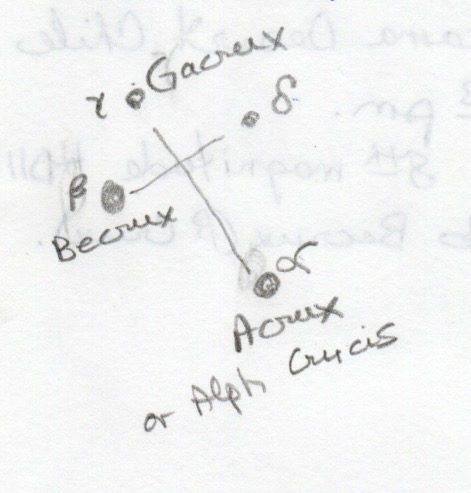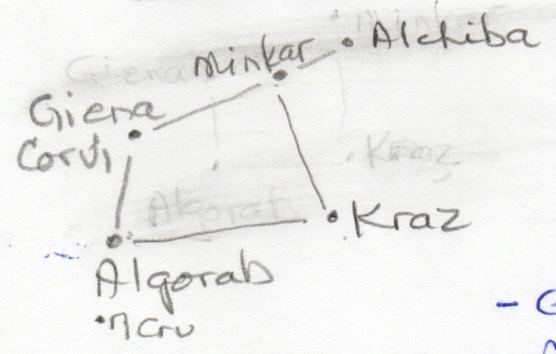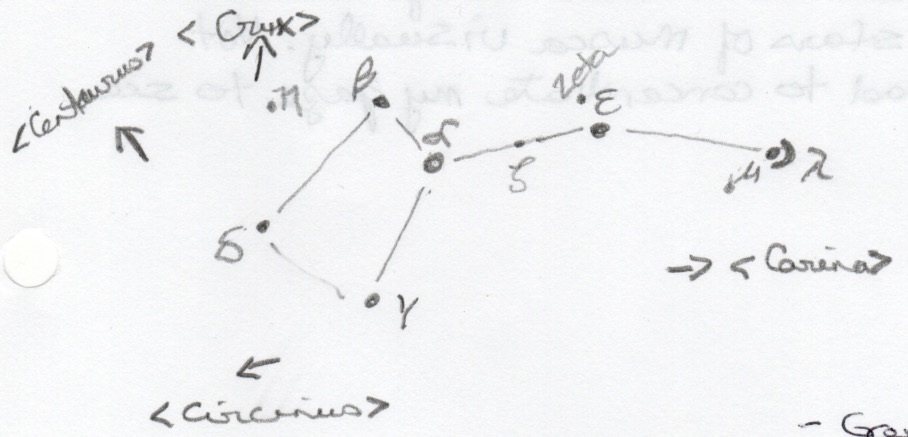
Constellations: Corvus, Crux, Musca, Orion
Galaxies: Large Magellanic Cloud (LMC), Small Magellanic Cloud (SMC)
Nebula: Coalsack
Clusters: Omega Centauri
Planet: Venus
Messier Object: M42 (Orion Nebula), M45 (Pleaides)
Located, not observed: M45 (Pleaides)
Location: San Pedro de Atacama, Chile @ SPACE Lodge
Date: 2018-04-09
Time: 8:00 PM - 10:15 PM EST
Instrument: Visual + Binoculars 10x42 IS + TeleVue 60 with 8 mm eyepiece
Transparency: Very Good (4)
Seeing: Very Good (4)
Temperature: 8º C - 4º C
Light wind, no clouds, no flies.
After supper, we had a private tour of Alain’s telescope field. Melody and Dave didn’t feel perfectly well but Jerry and I had altitude sickness meds and felt fine. Alain (Owner of the SPACE Lodge) introduced us to the Southern Hemisphere skies and provided our first viewing of some of the southern wonders overhead. I was amazed at the size of the Coalsack – about 7° x 5° in the sky! Dave also explained how to find the globular cluster Omega Centauri (aka NGC 5139) – the largest globular cluster in the Milky Way. Melody gave us a Southern Hemisphere Star Chart that Bruce had found online. Came in handy throughout the trip. I became chilled so headed back to our lodge to get warmer clothes but decided instead to just go to bed. Lights out at 10:30 PM.
Venus
Time: 8:09 PM EST
Venus Set: 8:35 PM EST
Instrument: Visual
Venus (in Aries) was observed every evening we stayed in the Atacama Desert. We saw it as it began its descent towards the horizon.
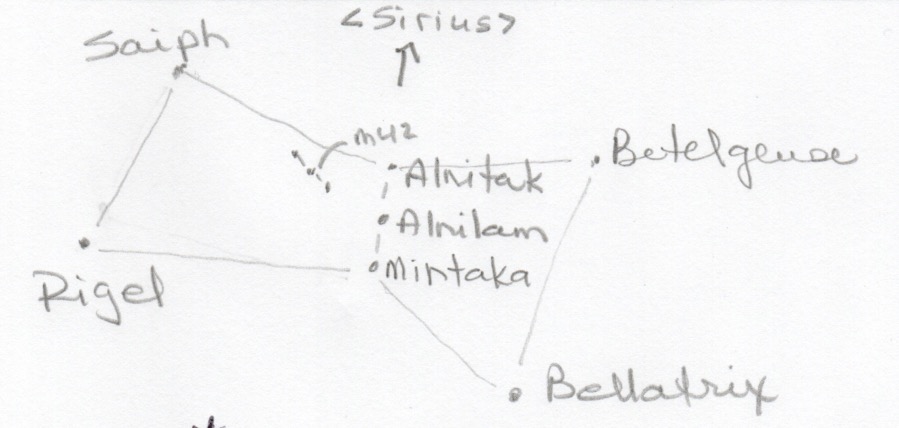 |
Orion Time: 8:35 PM EST Instrument: Visual S&T Chart Reference: 14, 16, B Orion stars were located but the Hunter was lying on his side with his sword pointing upwards. Quite a different look from what we see "up north". M42 was still as bright as ever and easily identified. |
|
Coalsack Nebula |
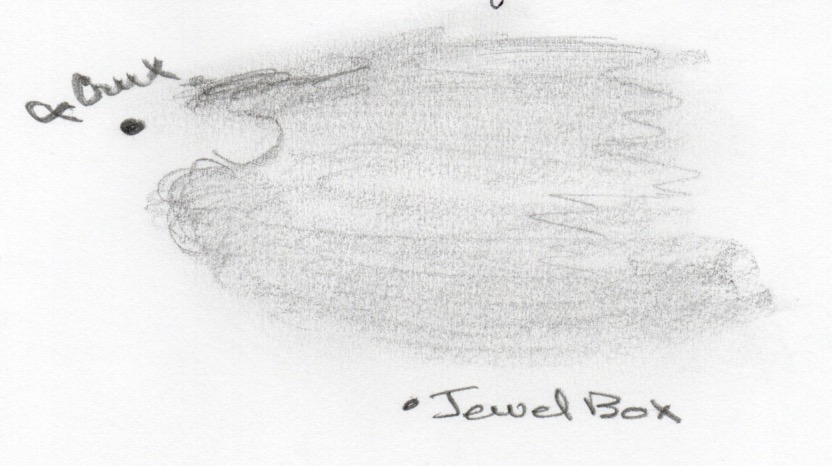 |
|
Large Magellanic Cloud (LMC) / PGC 17223 / Nubecular Major
|
LMC: SMC:
|
|
PM45 (Pleiades) Located this open cluster visually. It was very bright using the binoculars; the stars and nebulosity were fairly clear in the FOV. I didn't sketch it this time but hope to in the near future. |
|
|
Crux / Southern Cross Stars of Crux: |
|
|
Omega Centauri / NGC 5139 (in Centaurus) |
How to Find Omega Centauri: |
|
Corvus Stars of Corvus: |
|
|
Musca ("the fly")
|
Musca Stars: |

